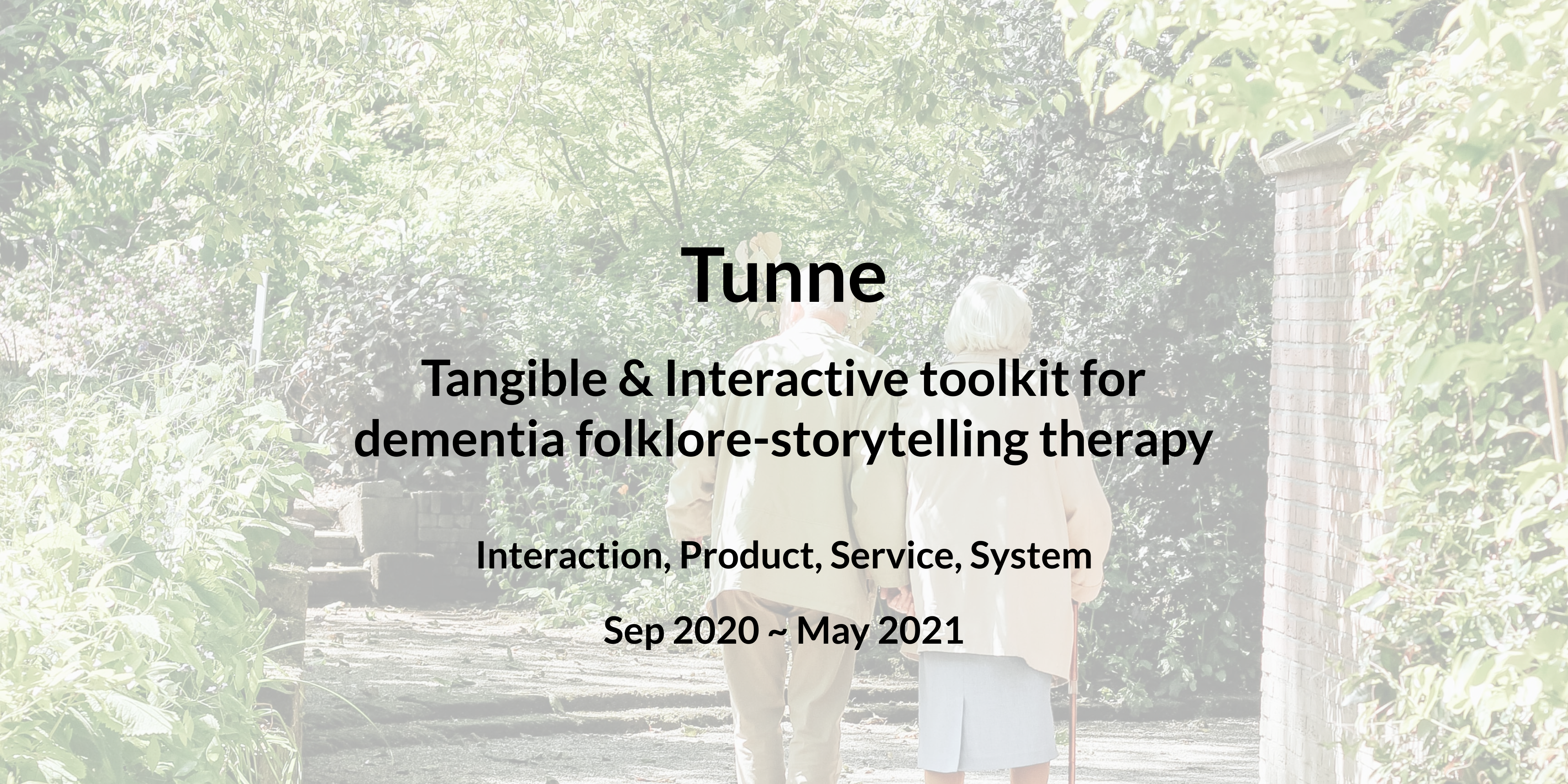

This is a graduation project at Tallinn University of Technology it was supported by Estonian Dementia Competence Centre and people around dementia.
Author - Interdisciplinary Design
I've taken initiative in qualitative research, concept ideation, prototyping and testing.
The world’s population is aging rapidly - the number of elderly people is increasing with the demand for the elderly-friendly products/services such as healthcare, housing, transportation, and education. Globally, there were 703 million persons aged 65 or over in 2019 and over the next three decades, the number of older persons worldwide is projected to more than double, reaching more than 1.5 billion persons in 2050.
The growth of elderly people who have more risks of cognitive impairments indicates the possible market size in this dementia prevention/treatment would increase as well.
It started from defining problem owners and support systems around them. And then the research landscape in Estonia will be explained with the previous works and special institutes working on dementia. It proceeded with online questionnaires to determine the general problem space and interviews to gain professional insights from different stakeholders.
As a result, the problem space was defined as follows.
Since the target stage of dementia is the earlier one, invoking stimulation on multiple sensations with not over-simplified interactions would be beneficial to provide sensorial therapeutic experience.
Also, the concept would allow caregivers to provide playful caregiving which makes joyful moments among users and thus enhance emotional happiness. And then it would allow medical experts to provide transparent caregiving with stakeholders by utilizing the interactive technology.
To visualise ideas to follow the solution space, I made some sketches which was also used to validate the ideas with stakeholders.
Since humans get stimulation through their 5 senses and movements around them, making an interaction stimulative would be helpful to enhance cognitive capability. For example, aromatherapy uses favorite scents to stimulate people’s sense of olfactory (ability to smell) naturally.
Tunne, an Estonian word meaning ‘sensation’, is a tangible and interactive toolkit for folklore-storytelling dementia therapy. It helps people with dementia to gain emotional happiness with multi-sensorial interactions, family caregivers to initiate therapeutic interactions at home, medical experts to detect the progression of dementia and emotional status, and society to raise public awareness of dementia.
Tunne was evaluated by the following experts with open-ended interviews:
According to the feedback, it is essential to look back on the balance of familiality and novelty of Tunne so that it is truly beneficial for main users - people with dementia.
And although I have focused on the early and middle stage where people with dementia still have the majority of conversational capability, the possibility that Tunne is used for different stages of dementia could be opened up.
Awarded: Tallinn City Scholarship 2021
Exhibited: TASE ’21 online grad show